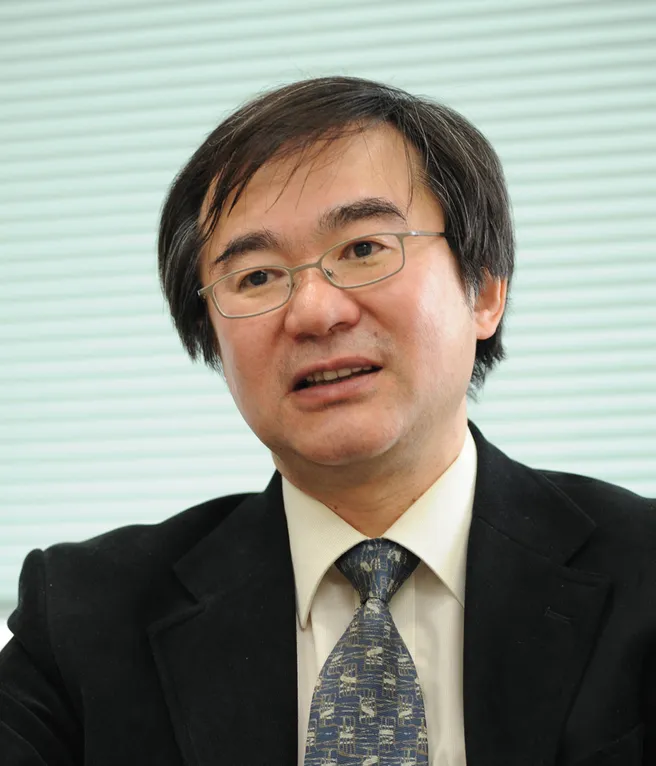Cooperative Communications: from the correlated source coding theorem viewpoint
Matsumoto Tadashi
Japan Advanced Institute of Science and Technology (JAIST), Japan
Abstract:
The focus of this talk is shifted to cooperative communications, however, this talk will, at the beginning, briefly explains how turbo equalization and distributed turbo coding techniques are related. It is shown that since the knowledge about the bit error probability of the source-relay node can be used as the correlation between the two frames, one from the source, and the other from the relay, we can well exploit the Slepian-Wolf theorem; With the utilization of the theorem, the relay can forward the frame even though it detects errors in the information part, and the destination can recover the data losslessly.
Then, this talk further expands the idea, from lossless-likn-design-based to lossy-based. In this part, we assume that none of the relays at the final stage has no errors in the information parts of the frames. This category of the problems belongs to Distributed Lossy Coding, represented by the Chief Executive Officer (CEO) problem, in Network Information Theory. Even in this situation, still the destination can recover the data with the distortion level lower than specified.
Then, this talk shifts the focus point on to recent results of our research on Hybrid Automatic Request (HARQ) with a helper. Analytical results of the outage probability of network coded helper transmission hybrid HARQ protocol is presented over Rayleigh fading channels in this paper, based on the theorem of multiple source coding with a helper. A parity is formed by bitwise exclusive-OR (XOR) of the previous M negatively acknowledged information packets, which is utilized as the helper, where M=2, 3. The major contribution is that the admissible rate region is derived for the HARQ protocol, where account is taken of the correlation among the packets. It leads to the upper bound of the outage probability analyses. The most significant finding of this paper is that Mth order diversity can be achieved by only one XOR helper packet transmission when transmitting M information packets, regardless of the correlation values among the information packets. Furthermore, when the helper has less transmit power than the information packet transmission, the packet correlation highly influences the outage performance of M = 2 XOR network coded helper transmission, compared to that with M = 3, especially at high average signal-to-noise power ratio (SNR) region. On the contrary, with both M = 2 and M = 3, increasing the transmit power of the helper influences the outage performance at low average SNR region only.
Biography:
Tad Matsumoto received his B.S., M.S., degrees, both under the mentorship by Prof. Shin-Ichi Takahashi, and Ph.D. degree under the supervision by Prof. Masao Nakagawa, from Keio University, Yokohama, Japan, in 1978, 1980, and 1991, respectively, all in electrical engineering. He joined Nippon Telegraph and Telephone Corporation (NTT) in April 1980. Since he engaged in NTT, he was involved in a lot of research and development projects, all for mobile wireless communications systems. In July 1992, he transferred to NTT DoCoMo, where he researched Code-Division Multiple-Access techniques for Mobile Communication Systems. In April 1994, he transferred to NTT America, where he served as a Senior Technical Advisor of a joint project between NTT and NEXTEL Communications. In March 1996, he returned to NTT DoCoMo, where he served as a Head of the Radio Signal Processing Laboratory until August of 2001; He worked on adaptive signal processing, multiple-input multiple-output turbo signal detection, interference cancellation, and space-time coding techniques for broadband mobile communications. In March 2002, he moved to University of Oulu, Finland, where he served as a Professor at Centre for Wireless Communications. In 2006, he served as a Visiting Professor at Ilmenau University of Technology, Ilmenau, Germany, funded by the German MERCATOR Visiting Professorship Program. Since April 2007, he has been serving as a Professor at Japan Advanced Institute of Science and Technology (JAIST), Japan, while also keeping a part-time position at University of Oulu.
Prof. Matsumoto has been appointed as a Finland Distinguished Professor for a period from January 2008 to December 2012, funded by the Finnish National Technology Agency (Tekes) and Finnish Academy, under which he preserves the rights to participate in and apply to European and Finnish national projects. Prof. Matsumoto is a recipient of IEEE VTS Outstanding Service Award (2001), Nokia Foundation Visiting Fellow Scholarship Award (2002), IEEE Japan Council Award for Distinguished Service to the Society (2006), IEEE Vehicular Technology Society James R. Evans Avant Garde Award (2006), and Thuringen State Research Award for Advanced Applied Science (2006), 2007 Best Paper Award of Institute of Electrical, Communication, and Information Engineers of Japan (2008), Telecom System Technology Award by the Telecommunications Advancement Foundation (2009), IEEE Communication Letters Exemplifying Reviewer Award (2011), and Nikkei Wireless Japan Award (2013). He is a Fellow of IEEE and a Member of IEICE. He is serving as an IEEE Vehicular Technology Distinguished Lecture since July 2011.
